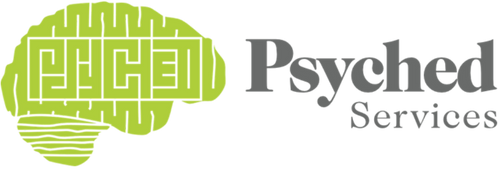Mindfulness in Schools: An Evidenced-Based Approach to Social-Emotional Learning

If your staff is overwhelmed by the sheer number of behavior problems they face every day in the classroom, it might be time to give mindfulness a try. Not only is it affordable, but it is an evidence-based approach to social-emotional learning (SEL). A mindfulness practice can be implemented on any scale– from an entire school campus to a pull-out counseling group– and can support traditional learners as well as those with exceptional needs.
What is Mindfulness?
When you focus on the present moment you are being mindful. UCLA’s Mindful Awareness Research Center (MARC) states, “Mindfulness is experiencing life from moment to moment with full awareness and acceptance.” The goal of a mindfulness practice is to help exercise the skills you need to acknowledge and accept the moment you are in as well as the thoughts, emotions, and feelings you encounter in that moment. No judgment. No trying to ignore them. Just being aware and accepting of all the sensations: physical, mental, and emotional.
Adopting mindfulness practices in education is becoming increasingly popular. As students and educators struggle to manage ever-increasing workloads, mindfulness can help prevent toxic stress, increase student engagement, and reduce educator burnout. At a glance, symptoms of toxic stress include difficulty sleeping, poor emotional control, heightened anxiety, and difficulty paying attention. Mindfulness is an evidence-based tool that schools can use to address these, and other, executive function issues.
Benefits of Mindfulness in Education and the Classroom
Mindfulness is an effective tool for every human, and especially beneficial for children with disabilities (such as ADHD and anxiety). Research shows that mindfulness practices increase self-regulation and the ability to pay attention. Since mindfulness strengthens these inner skills, children are better equipped to recognize their emotional states and proactively adjust reactions rather than react impulsively. In addition, preliminary research shows that when adolescents are able to regulate emotional responses, they are more likely to have positive interactions with others. The practice of mindfulness is very flexible and can be adapted as necessary to work for each person’s individual needs.
Backed by research, these benefits of mindfulness are highly relevant to educators:
-
Structural changes in the brain which enable better coping mechanisms
-
Improved attention
-
Better emotional regulation and impulse-control (i.e. better behavior!)
-
More compassion for self and others (a foundational component of SEL)
-
Reduced feelings of stress, anxiety, and aggression
8 Ways to Incorporate Mindfulness into the Classroom
The most successful way to implement mindfulness in education is through dedicated teachers who use it daily in their classrooms. By incorporating mindfulness activities into curricula, teachers make it habitual and reap the rewards year-round.
-
Guided Meditation:A very simple and free way to introduce students to a mindfulness practice is to play short clips of guided meditations. Apps, such as Calm, Stop, Breathe, Think and Headspace have many child-friendly guided (and FREE) meditations. MARC also has free meditations available through iTunes or online. Students may sit in their seats or lie on the carpet or rug while listening.
-
Gratitude Quilt: When students cultivate an attitude of gratitude, self-awareness increases and it teaches them to appreciate their experiences. Creating a Gratitude Quilt is a community-focused way to increase gratitude and mindfulness.
-
Five Finger Breathing:Also called Star Breathing, this activity helps children control their breathing pattern by inhaling and exhaling as they trace their finger along the pattern of a star.
-
Body Scan: Help children with progressive muscle relaxations—tense up and then relax different body parts—with this script. This body scan exercise helps promote calm and attention amid a hectic day.
-
Gratitude Journal: An incredible way to encourage a positive attitude from students is to help them commit to writing in a gratitude journal. They should write down specific people, experiences, and situations for which they are thankful. They can answer other questions as well, including, “What can I do to take care of myself today?” “How can I show appreciation for my friends today? For my family? For my students (or teacher)?”
-
Five Senses Check-in:When you encourage students to pay attention to their senses—“What am I smelling, hearing, feeling, seeing and tasting”—it helps them stay grounded in the moment. They can consider what thoughts come to their mind and if there are any judgments with those thoughts. This is something that can be done anywhere—while riding the bus to and from school, waiting in line to go out for recess, eating a snack in the classroom or walking down the hall.
-
Mindful Dance/Freeze Game: This idea is from Mindful Games and introduces mindfulness into the classroom through play. One child dances to a song, while another mimics their movements. When the music stops, they talk about how hard it was to mimic another’s movements and what went on in their bodies when they danced and laughed together.
-
Mindfulness Curricula: Now that you realize the benefits of mindfulness in the classroom, you might be ready to use it every day. We recommend one of these curricula to get you started:
-
MindUP – Not only does MindUP! provide an affordable lesson-plan designed to introduce mindfulness practices into a school setting, they target various age groups and offer teacher/district training.
-
Learning2Breathe – This classroom-friendly curriculum is great for adolescents.
Educators, students, and schools are facing enormous pressure to improve academic achievement, accommodate different learners, and thrive in a chaotic, distracting world. If you’re ready to tackle these issues with top-notch SEL and behavior management tools, consider school-based mindfulness practices.





